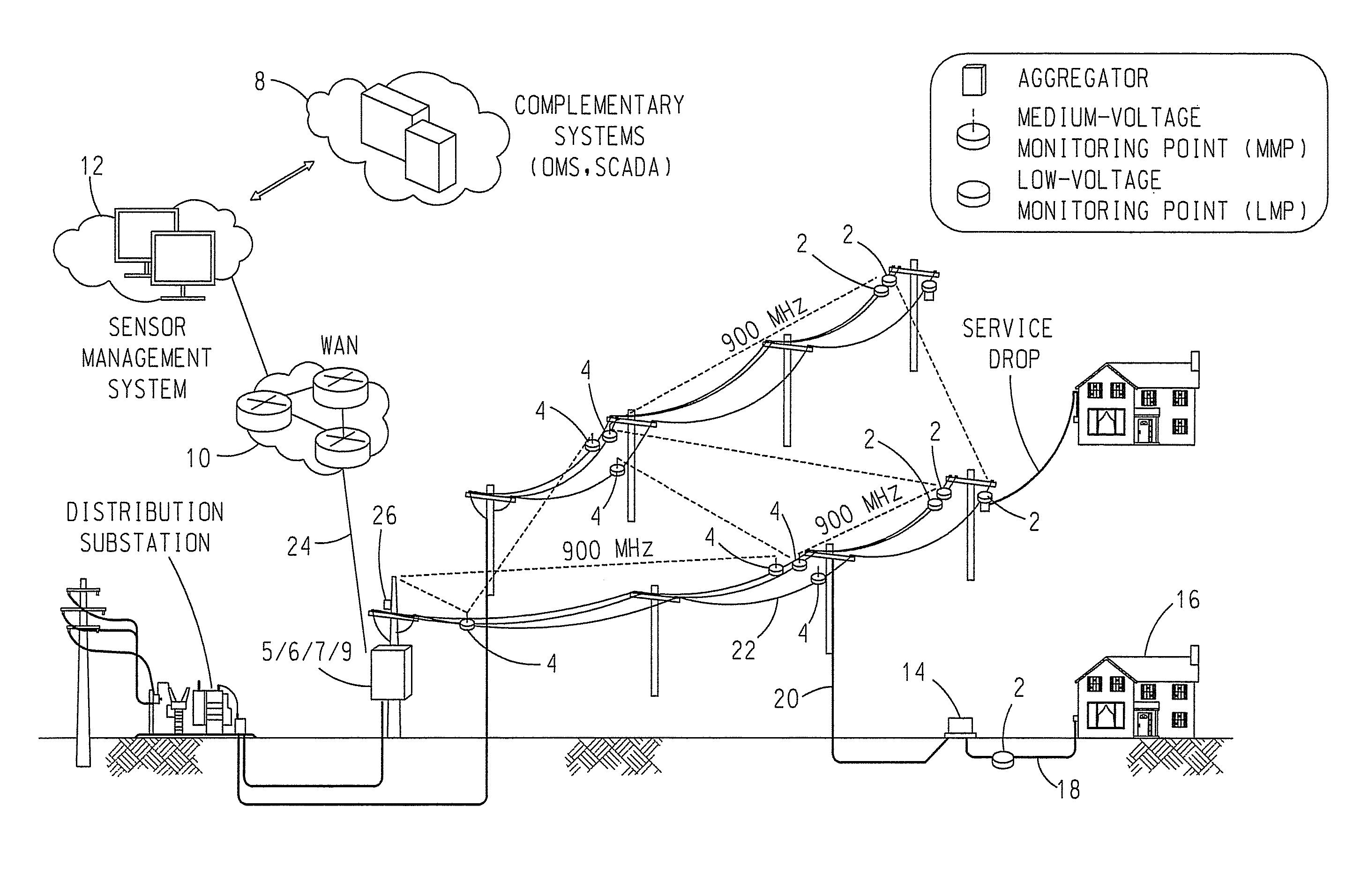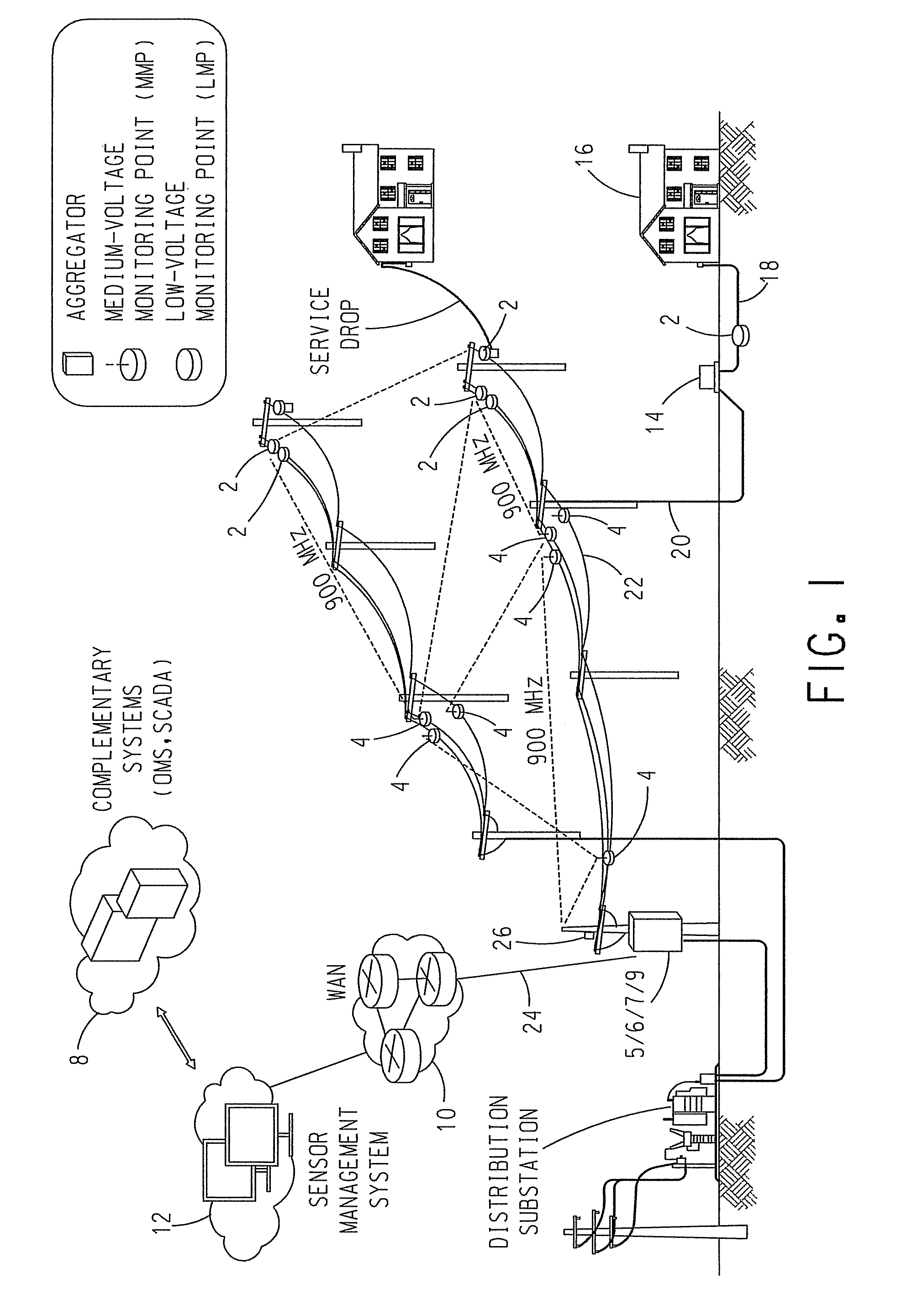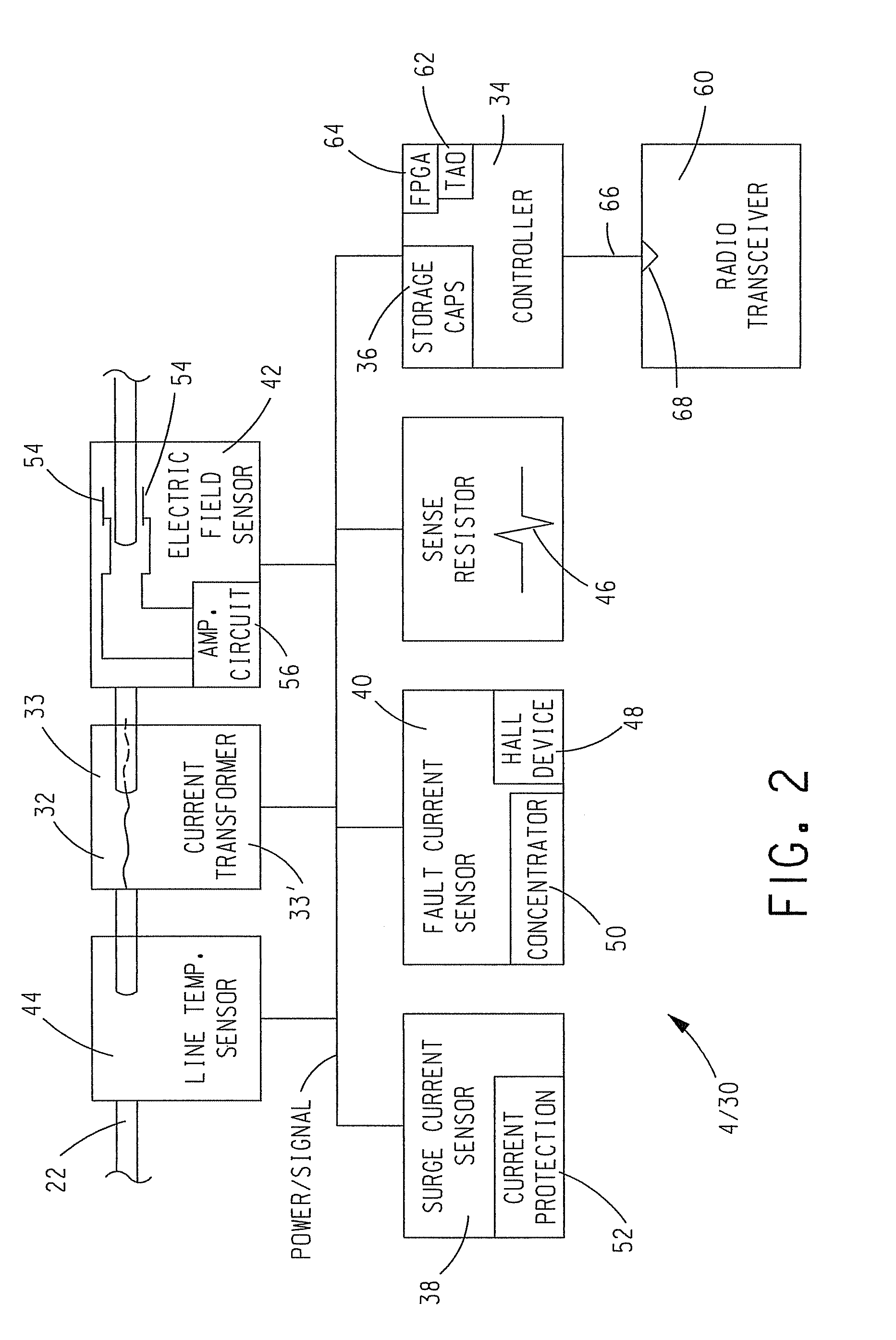Power distribution monitoring system and method
a monitoring system and power distribution technology, applied in the direction of testing/monitoring control systems, program control, instruments, etc., can solve the problems of manual dispatch of field crews, difficult to quickly identify the cause and location of electrical distribution problems, and difficulty in automatic monitoring or monitoring. , to achieve the effect of minimizing the total cost of ownership and making ready costs, and low cos
- Summary
- Abstract
- Description
- Claims
- Application Information
AI Technical Summary
Benefits of technology
Problems solved by technology
Method used
Image
Examples
Embodiment Construction
)
[0043]With reference to FIG. 1, a power distribution monitoring system includes distribution line sensors and supporting elements, which form an integrated wireless communication network to transport data from the field to a central location via a flexible backhaul (communication) means. The system dynamically forms its own wireless communication network, to easily build out monitoring capability across a distribution system, and can readily overcome obstacles and interferences to easily grow and expand. The system includes sensors that communicate wirelessly to an aggregation point which bridges the wireless communication network to a point of backhaul (communication) into the utility's network.
[0044]The system desirably uses a 900 MHz mesh for wireless communications among sensors. However, this is not to be construed as limiting the invention. A radio transceiver (RT) is implemented in a modular fashion in each sensor to allow future incorporation of alternate RF frequencies and...
PUM
 Login to View More
Login to View More Abstract
Description
Claims
Application Information
 Login to View More
Login to View More - R&D
- Intellectual Property
- Life Sciences
- Materials
- Tech Scout
- Unparalleled Data Quality
- Higher Quality Content
- 60% Fewer Hallucinations
Browse by: Latest US Patents, China's latest patents, Technical Efficacy Thesaurus, Application Domain, Technology Topic, Popular Technical Reports.
© 2025 PatSnap. All rights reserved.Legal|Privacy policy|Modern Slavery Act Transparency Statement|Sitemap|About US| Contact US: help@patsnap.com



